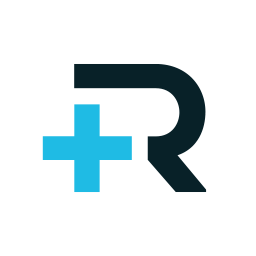3 Branches of Healthcare Navigation to Know to Boost Engagement

When we think of healthcare navigation traditionally we immediately think of members and how they interact with the healthcare system. While this is the largest part of the whole, shifting our perspective and considering how health plans are navigating member populations is key to strengthening relationships and establishing higher health engagement. Because healthcare navigation applies to everyone, on all sides of the equation—members, health plans, and the resources designed to help the communities we serve.
It’s not always about getting more members to navigate the system, but about helping health plans navigate member populations and communities to better serve and engage them.
When we think of healthcare navigation, we see it 3 ways:
- Members navigating healthcare, including how they interact with their health plan
- Resource navigation and how to find solutions to address unmet needs
- Health plans navigating their members and the communities they serve
When healthcare organizations understand these 3 branches of healthcare navigation effectively, that’s when health outcomes are impacted the most. As a result, we have highly engaged members, members who feel confident navigating the resources and care available to them, and better clinical outcomes.
Looking at each of these branches more closely, Reema is able to uniquely impact each. We can partner with both health plans and member populations to improve navigation for everyone. Here’s how.

Branch #1—Members Navigating Their Health Plan Benefits & the Larger Healthcare System
Navigating the healthcare system can be hard for a number of reasons. It’s not always straightforward, there’s a lack of trust, and some members have more pressing needs, so their health and healthcare isn’t a top priority.
When we’re able to make more meaningful connections with members, we build trust. This is the Reema Community Guide model—we establish relationships with members to uncover unmet social needs. As we build a strong foundation with members, we learn more about their clinical needs and how we can help. Helping members through this process lays the groundwork for members to take action on their own in the future. Or, at the very least, they know who to call for help to make sure they are managing their health effectively.
By joining members on their healthcare navigation journey, we’re able to identify barriers, address, and overcome them.
Helping a member navigate their health plan looks different for everyone—that’s why a personalized approach to address clinical needs is necessary for better engagement and outcomes. Sometimes it’s a matter of making a call on behalf of a member to schedule an appointment. Other times, it’s arranging transportation to and from the health clinic to make sure the member doesn’t miss their appointments due to a lack of reliable transportation. Whatever the case may be, getting to know members on a personal level and understanding their unique needs allows for more effective navigation.

Branch #2—Resource Navigation to Address Member Needs
When we meet critical member needs, we build trust that sustains engagement. Similar to helping a member navigate their health plan and benefits, resource navigation is something that many members struggle with. Health plans offer so many benefits and programs for members, but they don’t always solve for all of the members’ needs. Or, there are so many resources and programs available that members become overwhelmed to the point where they don’t take advantage of any of them.
Easing the burdens of everyday life can make a world of difference for a member. Being able to identify and provide resources to help address unmet needs is the first step to better health.
In both cases, a Community Guide is a great bridge to identify and connect members to the resources they need most. Whether it’s a benefit provided by a health plan or another community resource, we have a library of local organizations and services ready to help address the most critical member needs.
Reema can tap into these resources on behalf of members to help meet unmet needs, whether they are clinical or social. Often when we can overcome some of the common social barriers, we’re then able to build enough trust to start considering the unmet clinical needs a member may be struggling with. Either way, it all starts with identifying and deploying the right resources.

Branch #3—Health Plans Understanding & Navigating the Complexities of Member Populations
The final branch of healthcare navigation is the one that is often missed. This is about health plans being able to navigate and understand who their members are and what they need. This branch asks the question:
- Do you know what your members need from you?
- What barriers exist for members and how are you addressing them?
- Are you spending time asking members to do things instead of asking what you can do for your members?
Health plans collect so much data about their members from a clinical perspective, and have a lot of great information available, but none of that means anything if you can’t connect.
This is Reema’s sweet spot—we know how to engage the hardest-to-reach members. Our technology was designed to support empathetic engagement so we can identify needs and tailor communications accordingly to support Community Guide interventions and interactions. Because, as mentioned earlier, the healthcare systems built to help are often a burden to navigate. As a result, we believe establishing a relationship with a real person—someone who listens, meets members where they are, and understands the community’s resources—can ease those burdens, reduce social isolation, and transform lives.
This approach allows Community Guides to meet members where they are, creating a balanced approach to better care that leverages advanced technology while remaining person-focused.
Navigating the gaps between health care and social care to boost member engagement and ultimately drive better health outcomes isn’t a one-size-fits-all solution.
Personalization and taking the time to build trust between yourself and members is foundational in order to make meaningful connections. This all goes back to this theme of navigation—when you know how to navigate your member populations you’re able to boost engagement and establish connections. This allows you the opportunity to help members navigate barriers to access the care and resources they need.
And, in the end, when the navigation engine is running smoothly members are healthier, more engaged, and trust that they have access to the things they need and know where to go to find them.



